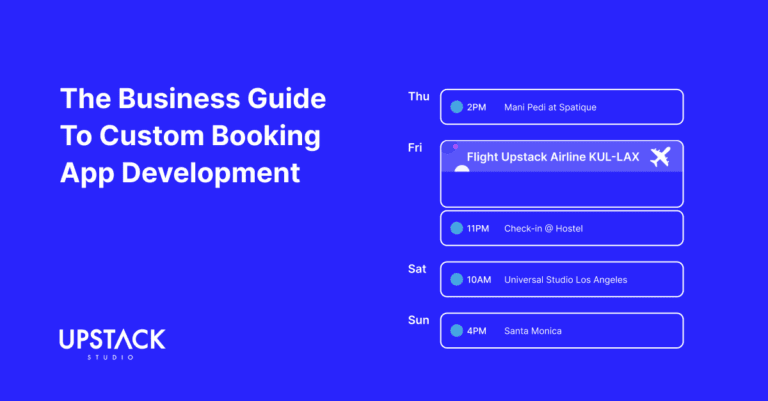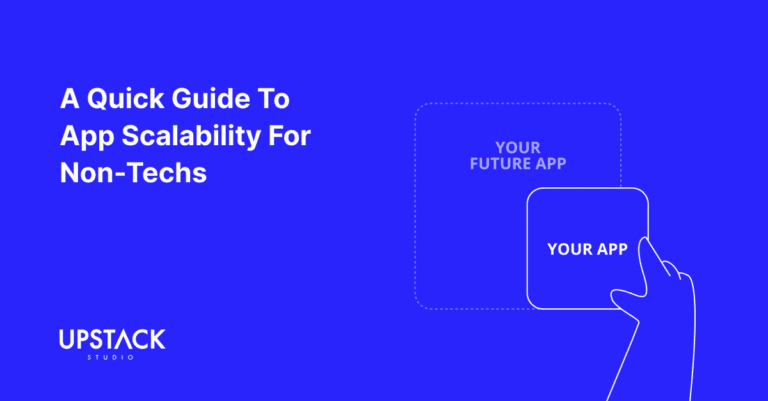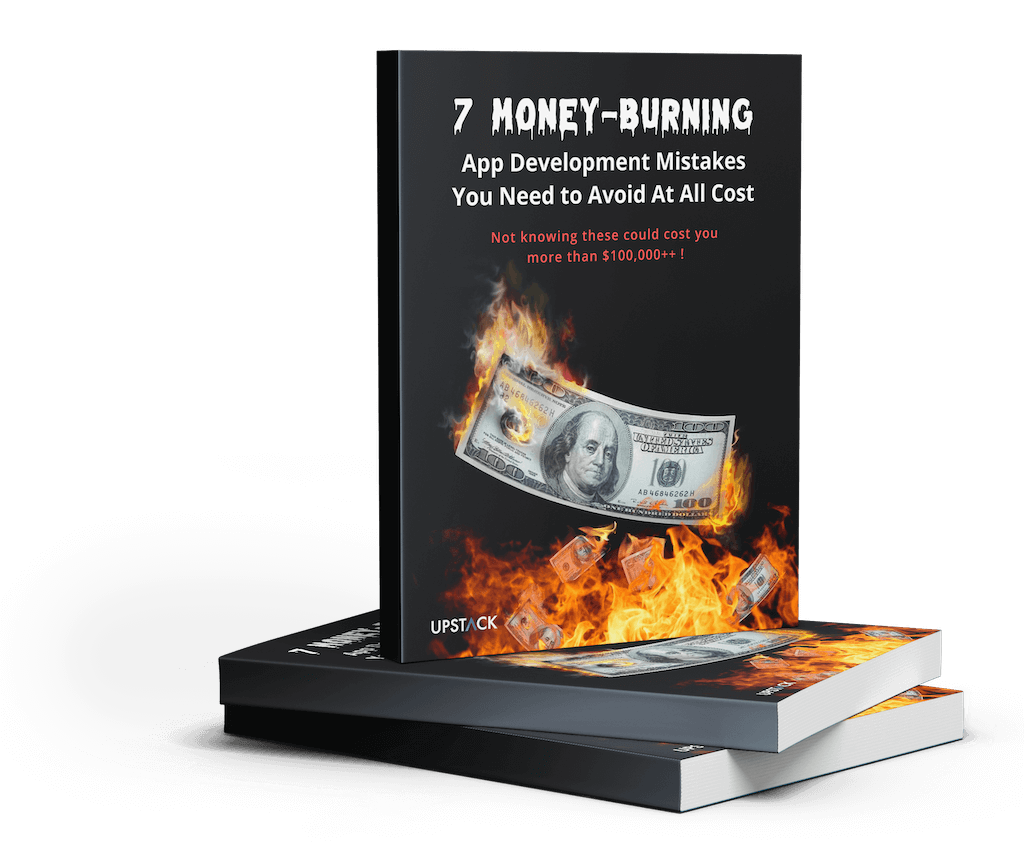Seasoned entrepreneurs often have strong feelings about going horizontal or vertical when building a SaaS business while new founders often have very strong confusions instead!

That’s what we’ll address in this quick guide as we break down both approaches and leave you with some real examples of vertical SaaS ideas.
Let’s begin.
Horizontal vs Vertical SaaS
Horizontal versus vertical SaaS simply refers to how broad the target market is.
Horizontal SaaS
These are software solutions that serve a wide range of industries and business sizes.
Horizonal SaaS platforms focus on universal business needs like communication, project management, or accounting, and you’ve probably used or at least heard of popular examples like:
- Slack – Team communication
- Salesforce – A CRM solution
- QuickBooks – Accounting software
- Dropbox – Cloud storage and file sharing
Horizontal SaaS have massive market potential and for that reason fierce competition.
Vertical SaaS
A vertical SaaS is designed specifically for a single industry or niche.
It focuses on solving unique pain points faced by that market, providing tailored workflows and integrations.
Because vertical SaaS solutions serve a specialized audience, the market size is smaller and usually has a higher technical barrier to entry, but players enjoy less competition.
Less competition is another word for “charge higher prices” for niche expertise!
4 examples of Vertical SaaS Ideas
A good sign something is a vertical SaaS is when industry outsiders go “Huh? There’s a software tool for THAT?”.
Some of these certainly gave us that reaction!
1. ChartSpire

ChartSpire is an AI-driven stock analysis tool that detects patterns and trends for traders.
The platform analyzes stock performance using established formulas and focusing on popular companies like Microsoft.
Users who trust the AI can allow it to generate insights with default settings, while those who prefer more control can define custom rules, which the AI incorporates into its analysis.

Traditionally, trading requires extensive research, calculations, and decision-making.
ChartSpire allows traders to move directly to evaluation and execution, saving them time.
2. Tabernacle

Tabernacle is a church management software solution designed to help ministries and religious organizations handle administrative tasks efficiently.
Like any organization, churches must manage operations such as membership tracking, event planning, and donation management.

Tabernacle simplifies these tasks, allowing church leaders to focus on growing their business – or rather, congregation – rather than administrative burdens.
P.S. It’s not limited to churches—mosques, synagogues, and temples also use similar tools!
3. Releese

Releese addresses a gap in the music industry by providing a centralized hub for independent artists to manage their careers without relying on traditional labels.
The platform simplifies tedious industry processes that creatives usually detest, such as:
- Royalties
- Distribution
- Licensing
- Streaming analytics
By acting as a digital music manager, Releese allows artists to focus on their work while ensuring their business operations run smoothly.

Let’s face it, most artists are not the most business-savvy, and now they don’t have to be!
4. Resivue

Resivue connects homeowners in the UK with blue-collar professionals for home renovations, repairs, and maintenance.
Let’s say your wiring short circuits so you submit a request to Resivue,
Resivue notifies the electricians in their network who then provide repair quotes, and you pick the one that seems least likely to blow up your house.

This business model is known as a reverse marketplace—instead of you approaching a seller, multiple sellers compete for you, the buyer.
All marketplaces are notoriously difficult, and narrowing down is always good, which is exactly what Reesivue does with the UK market..
Which One Should YOU Build?
We’ll answer this based on the four essential parts to any successful SaaS business:
Now let’s compare what to expect when building a horizontal versus vertical SaaS.
| Factor | Horizontal SaaS | Vertical SaaS |
| Market Size | Large | Small |
| Competition | High | Low |
| Pricing Power | Competitive | Can charge premium |
| USP | Necessary | Less necessary |
| Sales Strategy | Broad outreach | Industry-specific targeting |
Now let’s combine the two, as it takes different pathways for horizontal and vertical SaaS ideas.
1. Idea Validation
Validating a SaaS idea requires proving there is enough demand from actual buying customers for your software solution.
Horizontal SaaS:
- You already know the general idea works since there are already so many competitors, so you need to find SOME WAY to be different from the rest.
- You’re targeting a broad audience so validation requires wide-scale research.
- Expect a lot of surveys and competitor gap analyses.
Vertical SaaS:
- You don’t know if the problem is worth solving since you’re the first to try solving it.
- Validating an industry-specific idea requires deep engagement with those in the niche.
- Expect a lot of direct interviews with industry experts, pilot programs with niche companies, and testing integrations with industry software.
2. Product Management
Product management is how well you continue to maintain, update, and iterate your SaaS solution to align with changing user demands.
Horizontal SaaS:
- Product decisions must cater to as many industries as possible.
- Often better to build in high flexibility and customization so users can customize it to their use cases.
Vertical SaaS:
- Product decisions cater to one or a handful of industries with known needs.
- Integration with industry-specific tools is crucial.
- Less user customization options needed since the product is already tailored.
3. Marketing
This is how you make your target audience aware of your product’s existence, value proposition, and create a funnel to make purchasing frictionless.
It’s debatably the most important factor for a SaaS business.
Horizontal SaaS:
- Broad appeal means wider marketing efforts.
- Heavy reliance on competitive pricing.
- Lots of free trials and freemium models to capture market share.
Vertical SaaS:
- Marketing is highly targeted.
- A lot more word-of-mouth and referrals from industry influencers.
- Longer sales cycles but generally higher retention and lower churn.
4. Monetization Strategy
A SaaS monetization strategy is how you plan to generate revenue from the solution, including who to charge, and how to best charge them (for example a flat monthly fee, or one based on usage).
Horizontal SaaS:
- Pricing is highly competitive
- You need a LARGE customer base to be profitable.
- Lots of upselling and ad-hoc purchases.
Vertical SaaS:
- Can charge a premium because of less alternatives.
- Revenue is driven by depth, not volume—higher contract values but fewer clients.
For the Typical First Time Founder
Put a gun to our head and we’d say a vertical SaaS is better for new founders so you don’t have to worry about competing with giants in a cutthroat market.

Instead, leverage your existing contacts and work experience to identify industry-specific problems that need solving.
- Identify common pain points in your field based on your work experience.
- Validate the SaaS idea with industry professionals.
- Build a landing page MVP with a waitlist sign-up form.
- Create an MVP using no-code app builders.
- Get early users & iterate based on feedback.
This workflow lets you rapidly test new SaaS ideas, dump the duds, and find your diamonds.
Once you’re ready to transition from no code to custom code, you can find a developer to help you take your vertical SaaS idea to the next level.
Happy grinding!
If you’re looking to build a mobile application, check out our portfolio of past projects and contact us if you like what you see. Also, consider joining our mailing list for a one-stop resource on everything from micro-SaaS validation all the way to execution and promotion. Get a nifty list of questions to ask app developers when you sign up!
App Developer Interview Questions Template
Download this template now so you know exactly what to ask App Development Agencies! Let us know where should we send it through the form below.




